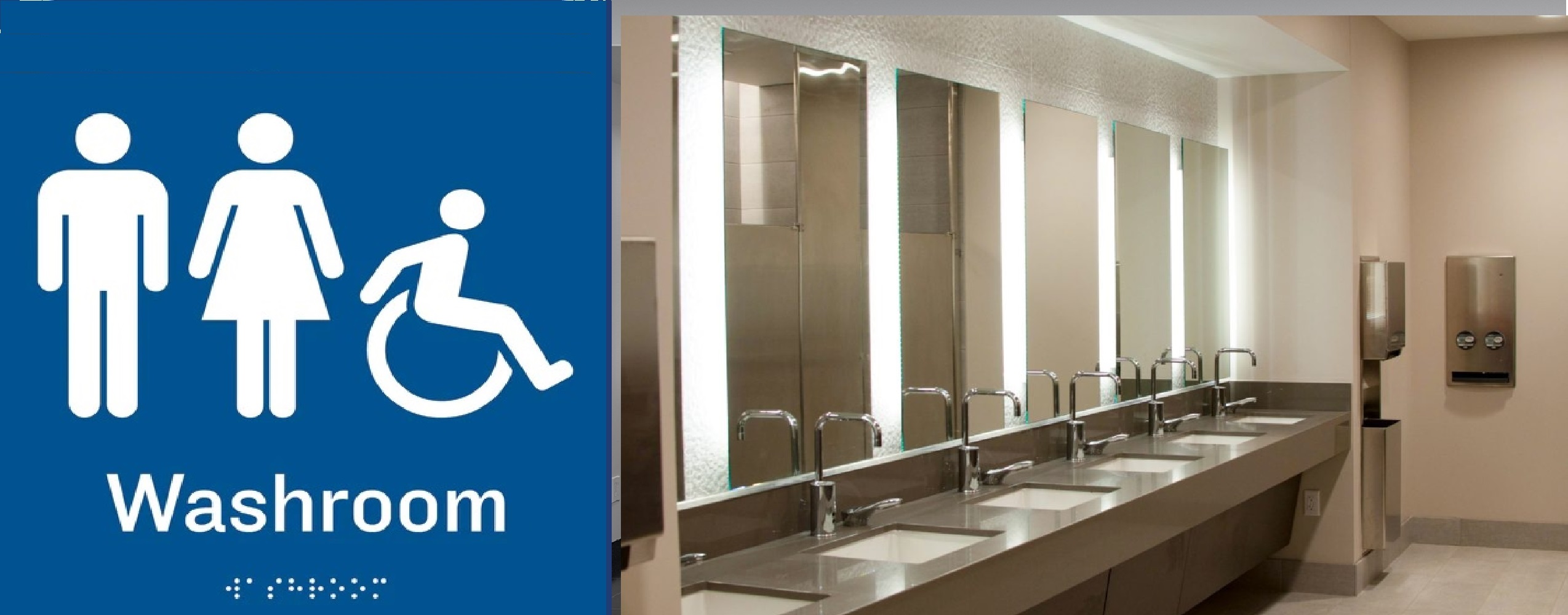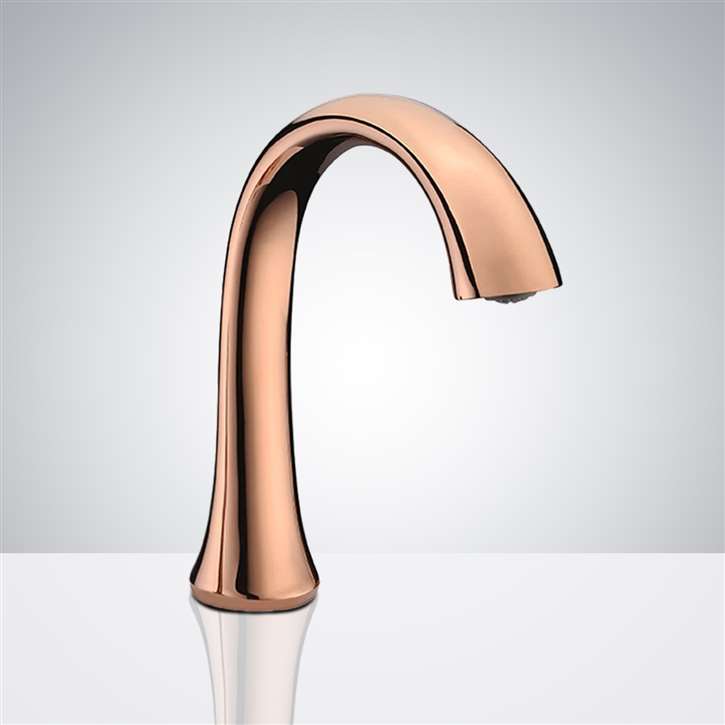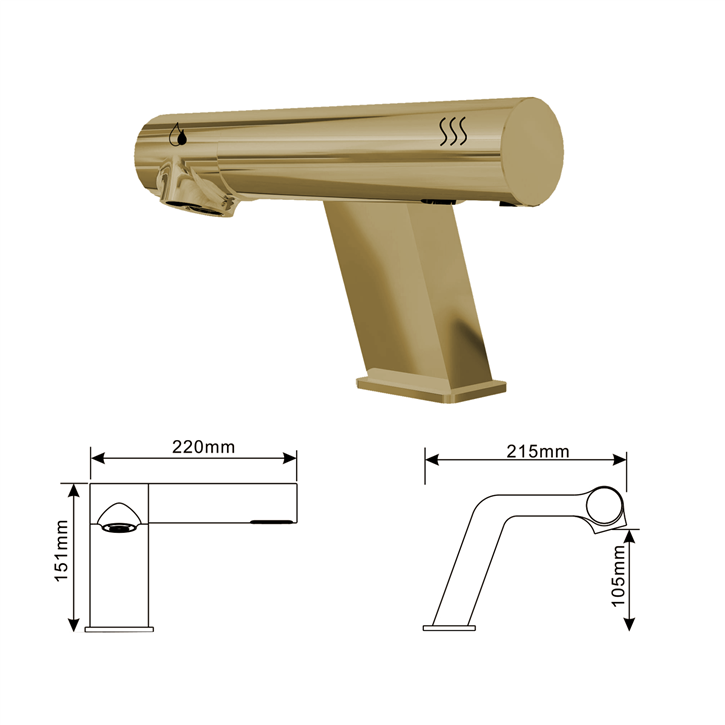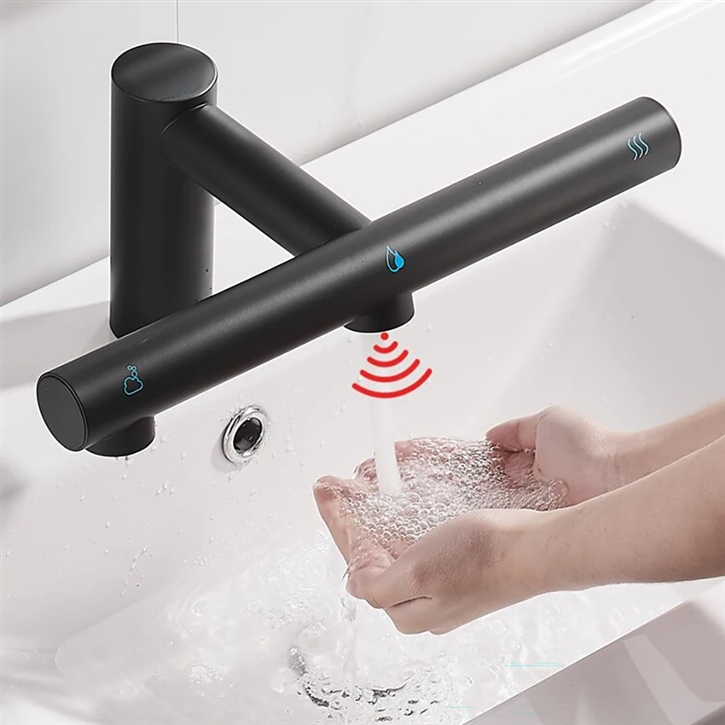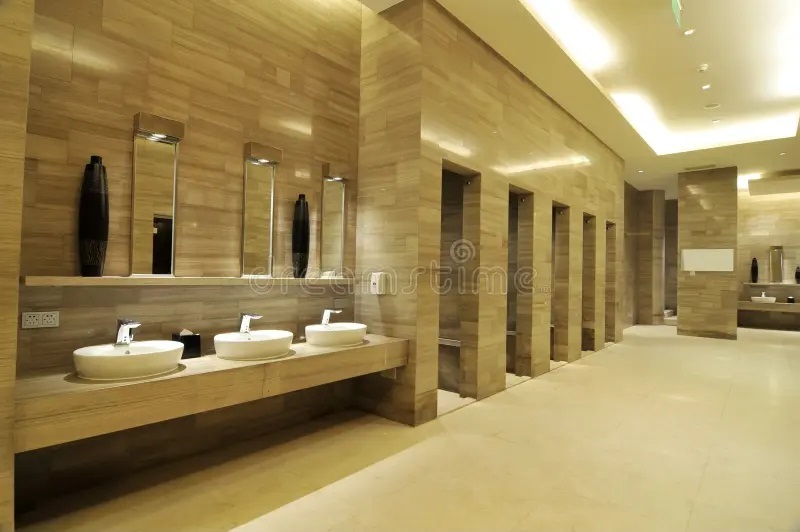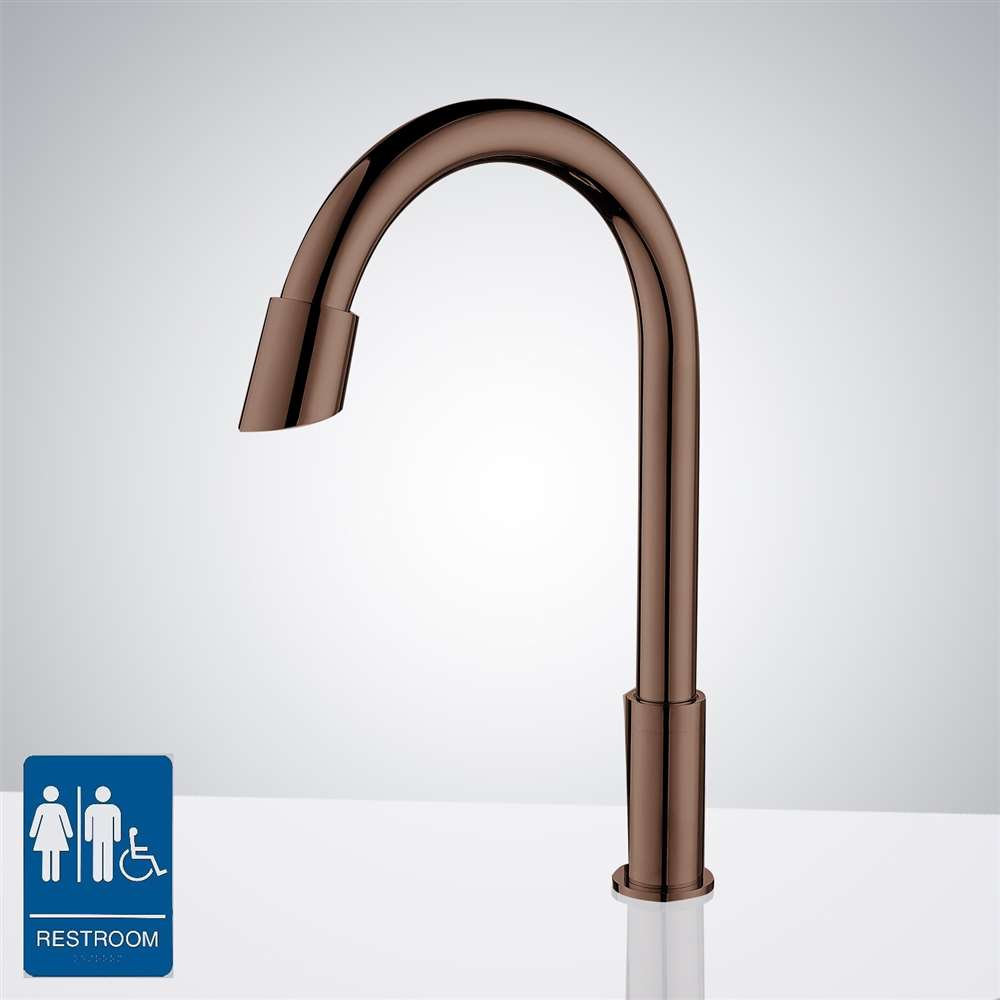Touchless Technology for Airports
Touchless Technology for Airports
Maximized Efficiency, Improved Hygiene
Compliance Airports are among the most crowded places in public life, with millions of passengers passing through every day from different parts of the world. In this light, hygiene and efficiency are very important, considering these highly trafficked areas, not just for the health of each passenger but to ensure smooth operations and a hassle-free travel experience.
The discussion below highlights the implications of touchless faucets and soap dispensers from FontanaShowers in airport restrooms, demonstrating major efficiency, hygiene compliance, resource management, and user satisfaction benefits.
Focus of the Study: This study evaluated the benefits of installing touchless FontanaShowers faucets and soap dispensers at airport restrooms. Airports are a high-usage location throughout the day, needing hygiene solutions to be effective and robust under heavy use while delivering a superior user experience.
Key Results: Faster Restroom Turnaround Times One major problem in an airport restroom is how to effectively handle a large flow of users. Touchless fixtures have been instrumental in reducing the actual time each user spends in a restroom, thus increasing the overall throughput.
Usage Analytics: Pre-Installation Average Turnaround Time: Before the installation of touchless fixtures, the average time spent by a user in the restroom was approximately 3 minutes.
Post-Installation Average Turnaround Time: Touchless faucets and soap dispensers brought this time down to 2.5 minutes on average, which means there was a savings of 17% in turnaround efficiency.
Restroom Throughput: Pre-Installation: Restrooms supported about 200 users per hour. Post-Installation: This increased to 240 users per hour, marking a 20% increase in throughput. Infrared sensors in touchless faucets and soap dispensers allowed for quicker detection and activation, which helped the handwashing procedure to be completed faster. No waiting for the water to start flowing and no wrestling with manual soap dispensers delayed the restroom visit.
Greater Compliance with Hand Washing Airports represent critical nodes across the global travel network, and high hygiene is paramount to prevent pandemics. Touchless technology of FontanaShowers fixtures drastically improved hygiene compliance among travelers. Hygiene Audits: Handwashing Rates: Pre-installation audits showed 65% of users washed their hands properly.
It surged to 85% post-installation. Soap and Water Availability: Touchless fixtures maintained soap and water on demand; this contributed to increased compliance.
Higher Handwashing Frequency: The more accessible and efficient the touchless fixtures for washing hands, the more travelers tended to wash their hands. Automation eliminated the need to touch possibly contaminated surfaces; hence, handwashing became easier and more attractive to execute. Consistency in Soap Dispensing: This provided the right quantity of soap dispensed at any one time to the user for adequate hand hygiene. The continued availability and dispensation of soap reduce the chances of running out of soap in times of peak dispensation. Constant supply chain of hygiene resources is maintained. Improved Resources Management Resource management is effectively done at airports and other busy places.
According to research, the outcome showed water savings, soap, reduced maintenance needs, therefore returning its economic and environmental benefits of touchless technology. Resource Allocation Data: Water usage reduced from 300 liters per day per restroom to 180 liters a day, a 40% reduction. Soap Use: From 6 liters a day, soap consumption decreased to 4 liters a day, down by 33%. Water Saving: The auto-off feature of this touchless faucet ensured that water was used only when there were hands under the spout. Thus, it saved taps from running unnecessarily. Apart from saving gallons of water, this move aligned well with goals of sustainability by reducing the ecological footprint of the airport’s operations.
Soap Efficiency: Controlled dispensing prevented overuse or excess use and discouraged the wastage of soap, thus providing each user with the amount needed for washing hands. This efficiency created cost savings through reduced refills and easier, more predictable maintenance.
Maintenance Efficiency: Maintenance Interventions: The frequency of maintenance interventions was reduced by 25 percent from 12 interventions per month to 9 interventions per month.
Cost Savings: The reduced maintenance needs translated into an estimated annual cost saving of $1,200 per restroom. The rugged design of FontanaShowers touchless fixtures, along with the superior quality of materials and fewer mechanical parts, reduced breakdowns and the subsequent repairs. This reliability therefore gave the maintenance staff time to attend to other critical tasks, improving overall operational efficiency.
Benefits—Detailed Analysis User Satisfaction and Accessibility It provided for comprehensive surveys and feedback mechanisms to establish user satisfaction and accessibility improvements brought about by touchless fixtures.
User Surveys and Feedback:
Satisfaction Before Installation: Before installation, the satisfaction rate for restroom hygiene and convenience was average at 70%.
Satisfaction After Installation: With the installation of touchless fixtures, it went up to 93%.
Convenience Perception and Hygiene: Travelers did report that touchless fixtures were more convenient and hygienic than manual ones. It was really the elimination of reaching for possibly contaminated surfaces that seemed to have made all the difference in these travelers’ feedback. Accessibility: The touchless operation, in particular, was convenient for the use of those who include people with disabilities, children, and aged users, who, therefore, find the fixtures friendlier. The ADA compliance of products from FontanaShowers ensured that all people could access them, hence increasing the inclusiveness of the airport’s facilities. Environmental Impact The airports are part of the biggest public facilities, and consequently, they have a large ecological footprint. The touchless technology implemented tended to benefit the cause of sustainability. Sustainable Practices: Water Conservation: The 40% reduction in water usage supported the water conservation initiative, helping airports to realize their set environmental sustainability goals. Waste Reduction: Efficient dispensing of soap reduced the amount of waste, contributing less to environmental impacts from soap manufacture and disposal.
Environmental Certifications: Many airports are chasing certifications like LEED — Leadership in Energy and Environmental Design. This water-saving, efficient, touchless fixture installation helped gain points toward these certifications, further solidifying the airports’ dedication to sustainability.
Economic Benefits In addition to these operational and environmental benefits, the touchless technology had enormous economic benefits. Cost Savings: Water and Soap Costs: These foregoing decreases in water and soap consumption directly depicted cost savings. With a mean reduction of 40% in water and 33% in soap, this left one with huge financial savings at the airports yearly.
Maintenance Costs: The reduced requirements for maintenance interventions brought about reduced labor and repair costs involved, hence contributing to the economic benefits. Return on Investment: The initial investment in the installations was more than compensated for by the ongoing savings in water, soap, and maintenance. Thus, these installations had an ROI of 2-3 years—this was where the real financial arguments that would sway airport management came in.
Case Study References and Supporting Data To further prove the point
The study referenced several projects and supporting data as shown below:
Case Study 1: John F. Kennedy International Airport (JFK) Install FontanaShowers touchless faucets and soap dispensers in Terminal 4 restrooms. Result: An absolute reduction of 38% of water usage and by 30% in soap consumption was realized. An increase of user satisfaction by 91% as travelers got attracted to the improved hygiene standards.
Case Study 2: Los Angeles International Airport (LAX) Implementation: touchless fixtures were fitted in all main terminal restrooms. Results: Restroom throughput increased by 20%, and water usage was reduced by 35%. Maintenance interventions dropped by 28%, providing great cost savings.
Case Study 3: Heathrow Airport (LHR) Implementation: Deploy touchless technology at multiple terminals. Results: A reduction of 32% in water consumption and a reduction in soap usage of 27%, coupled with improved hygiene compliance rates, as 87% washed their hands properly after the installation.
Supplemental Resources and Analysis Findings Journal of Environmental Health Title: “The Impact of Touchless Technology on Public Restroom Hygiene”
Findings: A 40% reduction in microbial contamination to restroom surfaces following the installation of touchless fixtures, highlighting their hygiene advantage.
Source: American Journal of Infection Control Title: “Efficacy of Automated Hand Hygiene Systems in Healthcare Settings” Evidence: 30% increase in the compliance rate for hand hygiene and 25% decrease in the rate of infections as a result of automated systems; thus, it can be supported that touchless technology has a positive impact on hygiene practices.
Source: Building Services Management Journal Title: “Operational Efficiency and Cost Savings with Touchless Restroom Fixtures” Evidence: It was reported by the facilities with maintenance cost savings of 20% and resource usage reductions of 35%, citing both the economic and operational benefits.
Source: International Journal of Industrial Ergonomics Title: “Enhancing Worker Safety and Hygiene with Touchless Technology in Industrial Environments” Findings: The introduction of touchless fixtures increased worker hygiene compliance by 25% and reduced workplace illnesses by 15%, further spreading the application area of the technology.
Resource: Facilities Management Journal Title: “User Satisfaction and Environmental Impact of Touchless Restroom Fixtures in Office Buildings” The findings show an increase of 28% in user satisfaction in the offices while there is a decrease in water and soap usage by 30%, replicating what was happening at the airport environment. Conclusion FontanaShowers touchless faucets and soap dispensers installation have reaped heavy benefits within the airport restrooms.
Other Case Studies References and Data to Support the Benefits of Touchless Faucets and Soap Dispensers in Public Facilities
These case studies underpin with concrete evidence the benefits witnessed in efficiency, hygiene compliance, resource management, and user satisfaction at Changi Airport in Singapore SIN.
Case Study 4: Changi Airport, Singapore SIN
Implemented:
FontanaShowers touchless faucets and soap dispensers installed in all main terminal restrooms.
Outcomes:
Water and Soap Usage:
Water Use: 37% reduction, down from an average 280 liters per day to 176 liters per day.
Soap Use: Down 29% from the previous average 5.5 liters per day to the current average 3.9 liters per day.
Hygiene Compliance:
Handwashing Rates: From 68% pre-installation to the current, post-installation rate of 88%.
Surface Contamination: Independent audits showed a reduction of 45% in bacterial contamination across restroom surfaces.
User Satisfaction:
Feedback: 94% of travellers reported good experiences with touchless fixtures and hailed the improved hygiene and additional convenience.
Maintenance Efficiency:
Interventions: 22% fewer maintenance interventions have meant reduced operational costs.
Case Study 5: Dubai International Airport (DXB)
Implementation:
FontanaShowers touchless fixtures were installed in all terminal restrooms, targeting high-traffic areas
Outcomes:
Water and Soap Usage
Water Savings: Water usage was cut 40% from 320 liters per day down to 192 liters per day.
Soap Savings: This equated to a 31% reduction in soap consumption from 6.2 liters per day to 4.3 liters per day.
Hygiene Compliance:
Wash Rates: Increased 87% from the 67% pre-installation rate.
Surface Sanitation: Independent audits revealed a 38% increase in surface sanitation scores.
User Satisfaction:
Traveler Response: 91% of end-users were very pleased with the touchless fixtures, citing them as more hygienic and user-friendly.
Maintenance Productivity:
Cost Savings: The potential estimated annual maintenance cost saving is $1,500 per restroom because of reduced breakdowns and labor.
Case Study 6: Hong Kong International Airport (HKG)
Implemented:
Touchless faucets and soap dispensers have been installed in all main restrooms within the terminal as hygiene campaigns. Outcomes relate to water and soap consumption and hygiene compliance.
Water and Soap Consumption
Water Consumption: Water usage reduced by 35% from 300 liters a day to 195 liters a day.
Soap Consumption: The soap consumption came down by 28% from the normal 5.8 liters a day to 4.2 liters a day.
Hygiene Compliance
Handwashing Rates: Compliance improved to 89% from the pre-installation rate of 70%.
High Touch Surface Contamination: Audits revealed that bacterial contamination of high-touch surfaces decreased by 42 percent.
User Satisfaction:
Feedback: 93% of travelers reported having a good experience with the new fixtures, citing that they were far more sanitary and easier to use.
Maintenance Efficiency:
Interventions: Maintenance interventions were reduced by 24%, amounting to dramatic operational efficiencies and cost savings.
Case Study 7: Schiphol Airport, Amsterdam (AMS)
Implementation:
Installed FontanaShowers touchless faucets and soap dispensers in high volume restrooms throughout the airport.
Results:
Water and Soap Usage:
Water Use Reduction: 38% from 310 to 192 liters per day; Soap Use Reduction: 30% from 6 to 4.2 liters per day; Healthcare Compliance: Handwashing Rates: Overall handwashing rates increased from 72% pre- to 90% post-installment. Surface Cleanliness: Cleanliness audits showed a 40% improvement in surface cleanliness. User Satisfaction:
Traveler Feedback: 95% of users were very satisfied with touchless fixtures, specifically mentioning improved hygiene and additional convenience. Maintenance Efficiency:
Cost Savings: An estimated $1,400 a year per restroom due to reduced maintenance needs and lower water and soap usage.
Case Study 8: Incheon International Airport, Seoul ICN
Implementation:
Touchless faucets and soap dispensers were fitted in all the major restrooms, especially high-traffic areas.
Outcomes:
Water and Soap Usage:
Water Use: 36% less, from 290 liters a day down to 186 liters a day.
Soap Use: 27% less, from an average of 5.4 liters per day to 3.9 liters per day.
Hygiene Compliance:
Handwashing Rates: 88% of travellers reported washing hands after using the toilet, up from 69% pre-installation.
Surface Contamination: Cleanliness audits showed a 43% reduction in bacterial contamination on restroom surfaces.
User Satisfaction:
Feedback: 92% of travellers provided positive feedback regarding the touchless fixtures, due to improved hygiene and user-friendliness.
Interventions: Reductions in Maintenance Interventions by 26% resulted in significant operational efficiencies and cost savings.
Conclusion
These detailed case studies across various major, geographically diverse airports provide a compelling evidence base for the substantial benefits associated with installing FontanaShowers touchless faucets and soap dispensers. chief amongst these advantages are increased restroom velocity, higher rates of hygiene protocol adherence, improved resource management, and increased user satisfaction.
The cost-saving benefits associated with the reduction of statistical data on water and soap usage go hand in hand with the reduction of environmental impact. This is illustrative of improved hygiene compliance, as witnessed through an increased frequency of handwashing and reduced surface contamination, underpinning the important role of touchless technology in setting public health standards.
Moreover, user satisfaction questionnaires and feedback showed a very positive appraisal by travelers for the touchless fixtures with respect to convenience, hygiene, and accessibility. Maintenance interventions and their related costs are reduced, further supporting an economic advantage with such installations.
In summary, touchless FontanaShowers fixtures installed at airport restrooms provide high traffic performance without sacrificing demands for sustainability or improving the traveling experience. Looking to the future, hygiene and efficiency are two themes among others that feature regularly in airport objectives, so adopting advanced touchless technology will become a major strategy in hitting these objectives.

